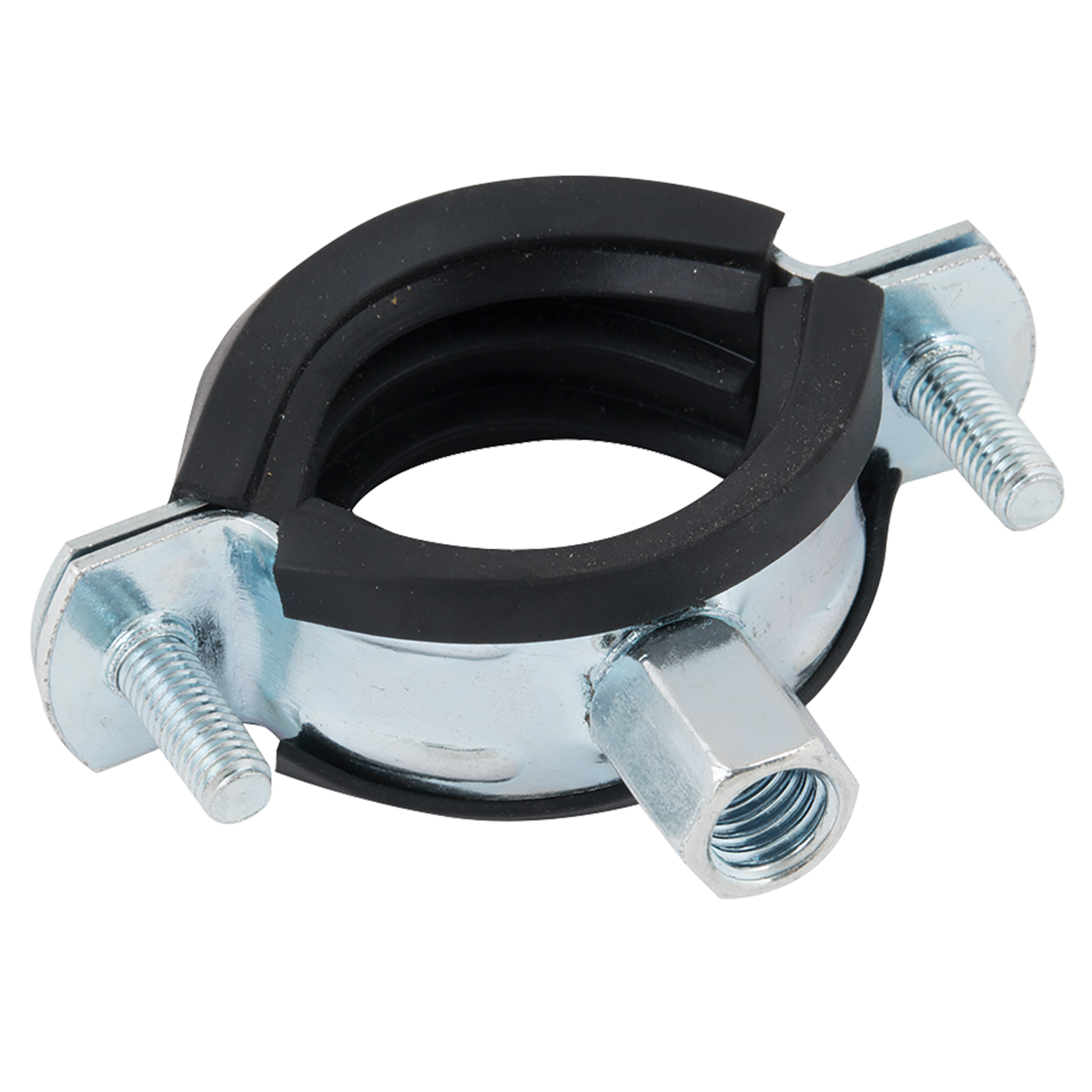Jubilee Clips and Clamps Guide
While Jubilee is a brand name, over the years it has become synonymous with hose clips and band clamps. And even though there are many manufacturers these days that produce reliable and durable bands, the name Jubilee, when it comes to clips and clamps, is still commonly used.

Robert Bester
Updated on Jun 4, 2025

Jubilee Clips and Clamps Guide
This guide is an ideal starting point for finding out what a Jubilee Clip is used for, what types of clips and clamps are available, and how they can be used in a variety of practical situations, in a huge range of applicable industries.

What is a Jubilee Clip?
A Jubilee Clip is the universally recognised name for a Worm Drive Hose Clip, invented in April 1921 and patented by the owner of L Robinson and Company, Commander Lumley Robinson.
Also called hose locks, Jubilee hose clamps or clips (the names are often used interchangeably), they are usually used to attach tubing or hose pipe to a fixture, such as a spigot, barb, nipple or tap (any outlet that allows the flow of liquid or air through a hose once clamped).
Hose clips typically come in the form of a steel, brass or nylon circular band with an external tightening mechanism. Often designed as a screw fitting, they often feature a worm gear for tightening (hence the name worm drive clips or clamps).
How do Jubilee Clips work?
Jubilee Clips (or Hose clamps) are usually placed on the outside of a hose where it overlaps the outlet. The clip or clamp can then be tightened using a hex key or a screwdriver until it creates a seal at the point where the hose and spigot meet. This, in turn, reduces the risk that the hose will leak or detach due to high water or air pressure.
Some hose clamps, such as wire clamps, ear clamps and spring clamps, feature different locking mechanisms. O-clips, which are generally the most affordable type of hose clamps, do not come with any locking mechanism and need to be pinched or crimped to tighten. Most hose clamps come with straightforward installation instructions.
What is a Jubilee Clip used for?
Jubilee hose clips or clamps are usually used to secure tubing around an outlet. They are also sometimes used as a crimp fitting to regulate water or air pressure in various settings and situations including automotive engine assembly. Since hose clips are extremely durable, they are also often used to secure ducting and wiring to walls and ceilings.
How to measure Jubilee clips
Jubilee clips and clamps come in a variety of sizes, from mini clamps to large heavy-duty clamps for use in industrial settings. The width and length of each clip’s hose lock affect the firmness of the grip on the tubing or cable. These measurements are always outlined in the product specifications.
How to tighten a Jubilee Clip
If you want to tighten a jubilee Clip, use a screwdriver or equivalent tool to tighten the screw mechanism until it is fastened securely. Try not to fasten too tight, as this could damage the hose or pipe it is attached to.
How to remove a Jubilee Clip
Removing a Jubilee Clip is usually a case of using a screwdriver or equivalent tool to loosen the screw mechanism, until it detaches from the hose or pipe it was fitted to. If the Hose Clip is rusted or damaged in any way, it might be a case of using a pair of pliers or other heavy duty tools to remove the clip without damaging the associated hose or pipe.
Can you reuse Jubilee Clips?
Jubilee Clips can be reused, but this relies heavily on the quality of the clip or clamp and if it has been damaged during its first use. Ideally you should replace it with a brand new one if possible.
What are Jubilee Clips made from?
While stainless steel hose clamps tend to be very popular, hose clips are also sometimes made from brass, nylon or zinc-coated steel. Nylon locks, such as snap grip clips or Herbie clips, sometimes come in a variety of colours to simplify the identification of different pipes and hoses. The type of Jubilee clips you opt for should depend on whether you are planning to use them indoors and outdoors and the amount of pressure you will need them to withstand. In addition, do keep in mind that hose clamps made from certain materials are easier to install and remove than others.
Hose Clip specifications
Normally found on the packaging, hose clip specifications usually cover clip type and model, as well as a variety of measurements. These can include opening sizes, clamping widths (the minimum and maximum) and the clamp’s safe holding force.
Hose Clip pressure rating
Hose clip pressure rating outlines the maximum force that the tightened clamp can hold in place once installed. It is crucial that hose clips are not over-tightened and many clamp types come with a blocking feature that prevents this from ever happening. Hose clip pressure ratings depend on a number of factors such as what the clamp is made from, its length and band size as well as its fastening mechanism.
What Jubilee Clip types are available?
Hose clips come in a variety of materials and sizes, and also have different tightening mechanisms. As much as Jubilee is the most common manufacturer, there are also other manufacturers that produce them in huge quantities.
With this in mind, here are the most common types of hose clips on the market today:
Bolt Drive Hose Clamps
Also called head bolt clips and T-bolt clamps, bolt drive hose clamps come with a bolt that runs across the band and is secured at both ends. They are typically made from stainless steel, which means they are strong and durable. Bolt drive hose clamps are usually tightened with a hex drive. They are typically used in industrial settings where liquid or air is under high pressure. Meanwhile, mini versions of bolt drive hose clamps are usually utilised in automotive assembly and repair.
Quick-Release Hose Clips
Also referred to as quick-release hose straps, quick-release hose clips are spruced up cable ties. Made from nylon or metal, quick-release hose clips usually need to be fully opened before they are looped around a hose or tubing. Once in place, one end of the open clip is pulled through a grip lock. As their name suggests, quick-release hose clips come with a quick-release mechanism, which makes them very easy and fast to remove.
Snap Grip Hose Locks
Made from sturdy plastic, snap grip hose locks are also sometimes called Herbie clips. They come with interlocking ratcheting teeth and usually need to be squeezed with pliers for optimal tightness around hoses or cables. Snap grip hose locks are often used in agricultural, automotive, marine and electrical industries.
Worm Drive Clips
Worm drive clips come with relatively short and thick worm drives or grub screws — this mechanism sits on top of the bands. This is the most recognisable clip design and is usually tightened with a hex driving tool. While not quite as strong as bolt drive clips, worm drive clamps deliver better sealing than many bolt and nut style clamps.
Caddy Clips
Specifically designed to safely suspend pipes and ducts from beams in indoor settings, caddy clips are usually hammered into place. They are fast and simple to install and relatively durable.
Herbie Clips
Usually made from nylon, Herbie clips come in a huge range of sizes and diameters. They are held in place with interlocking teeth. Herbie clips are highly durable and versatile, making them popular in various industries such as machinery and white goods.
Toggle Clamps
Used to hold fixtures in position, toggle clamps work on a locking principle called toggle action or a series of levers and pivots. Toggle clamps usually feature a pair of clamping arms that hold the objects securely in place.
Pipe Clamps or Pipe Clips
Pipe clamps are normally used to support suspended pipes that run horizontally or vertically along a surface such as a wall. Pipe clamps hold pipes in place without restricting subtle pipe movements or pipe expansion.
